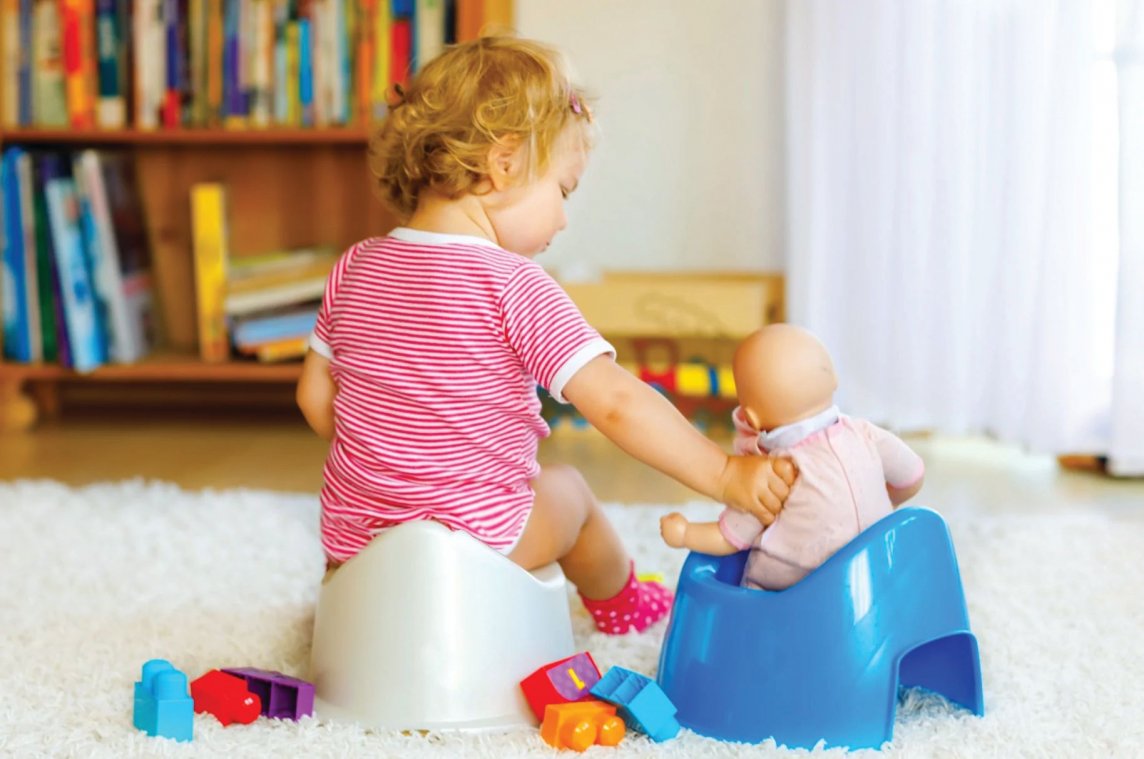Potty Training 101: Encouraging Independence

There is not one “right” way or one “right” age to learn how to use the toilet.
Most children develop control over their bowels and bladder by 2 to 2.5 years old. Signs of readiness are hiding to have a BM, BMs that happen right after a meal and stay dry for at least 2 hours and can dress and undress. Another sign is showing interest when an adult uses the bathroom or becomes uncomfortable in a dirty diaper.
Timing for toilet training is important. A hectic time like the holidays, a new baby, a new childcare arrangement, or moving to a new home is never a good time. Rather choose a time when you have two weeks of calmness, no trips planned and can dedicate the time needed for training.
To start, have your child choose new underwear, a potty chair that attaches to the toilet, or a stool to make the toilet easier to reach. Handles on the side are wonderful, as children whose feet are not on the floor/stool may develop a fear of falling. Go to the library and borrow good books on toileting to read.
Begin by reading the books and talking about wearing the new underwear. I am not a fan of Pull-ups. Children need to feel pee running down their legs to learn about the feeling and the urge to go. Remind your child to use the bathroom about every 30 minutes or when you begin to see the signs. If there is an accident, clean it up with no harsh words and share with your child that they need to try to get to the toilet on time.
To encourage peeing in the toilet, make pee-pee shooters. Take a roll of toilet paper, rip apart the sections and mark the middle with a marker. Each time your child needs to pee, they put one in the toilet to pee on. I am not a fan of food for reinforcement but rather a high five or an extra story.
Toilet training can be known for power struggles because it is so tied up with toddlers wanting to have control. Children can only control what goes in their mouths and out of their bodies. Let them decide when they need to go with gentle encouragement. After having a BM, let your child decide if they want to flush it. An alternative would be to take a picture to show others or hang it in the child’s room.
For nighttime, line their mattress with a waterproof liner and wear diapers for a few weeks that go right into the trash upon waking. Once your child makes it through several nights dry, you are good to stop using them.
My best advice is to buy club soda for accidents. If your child pees on a rug, blot it up with a paper towel, pour a bit of club soda on the spot, and blot again. Though you may think you are not making much progress, keep at it, your child will learn independence by going to the toilet by themselves.
Anne E. Mead, Ed. D. is the Director of Family, School & Community Partnerships for Danbury Public Schools. She can be reached at 203-830-6508 or by email at meadan@danburyu.k12.ct.us.







